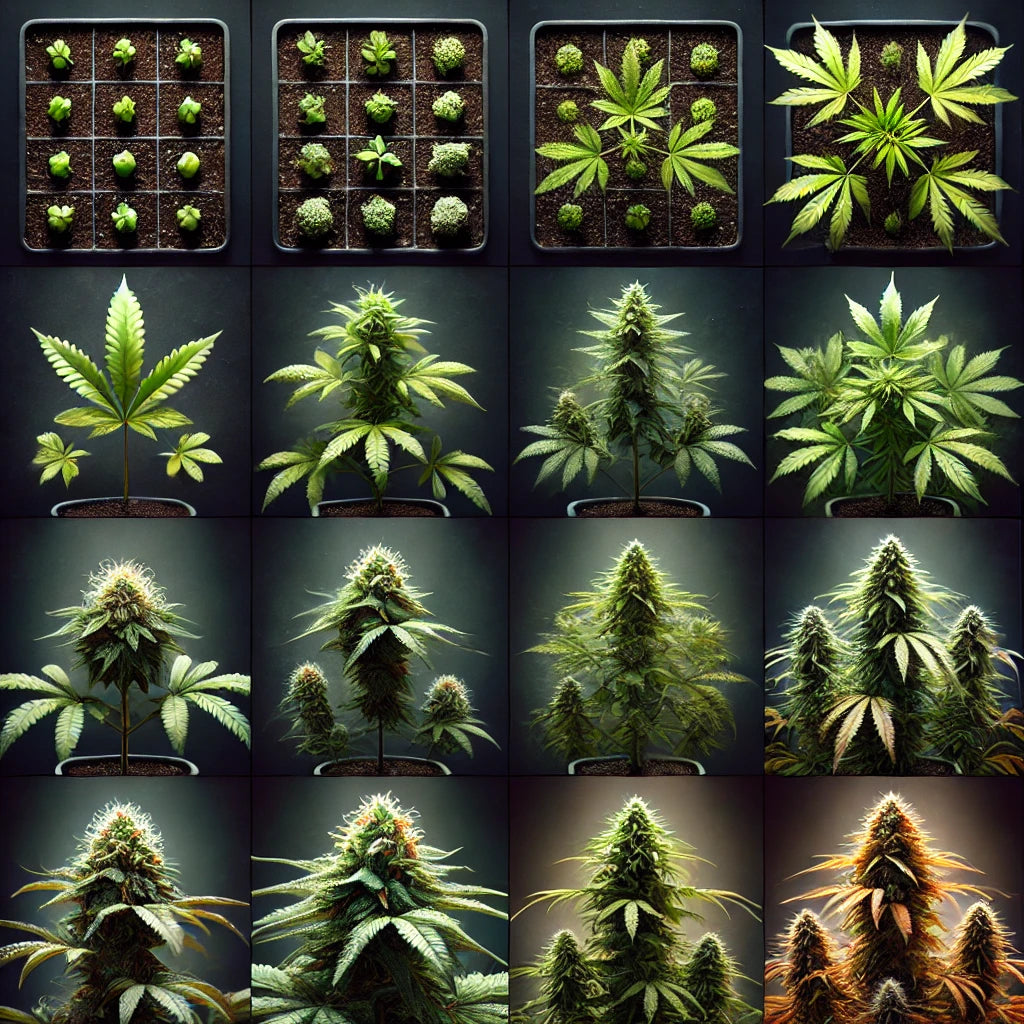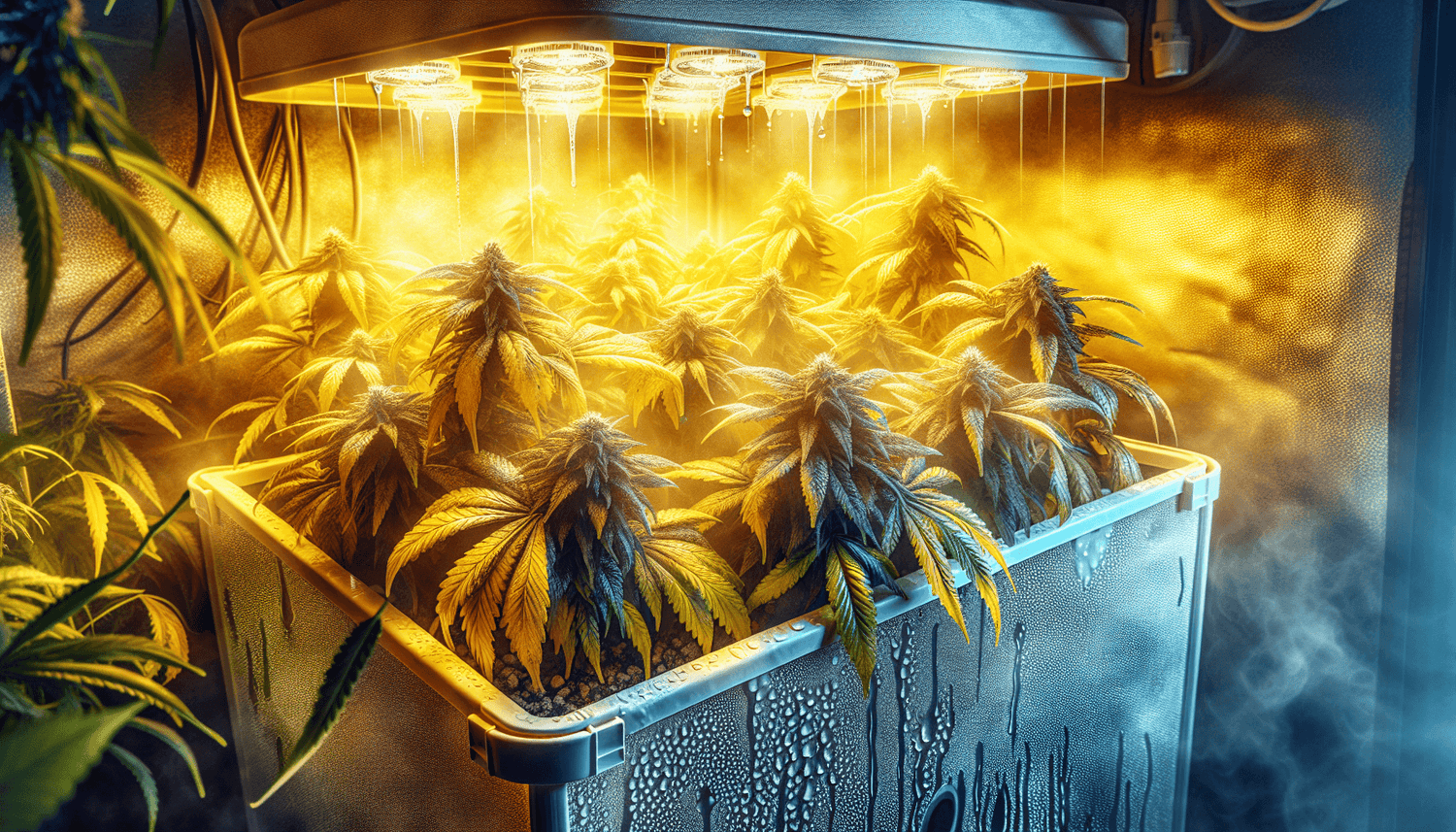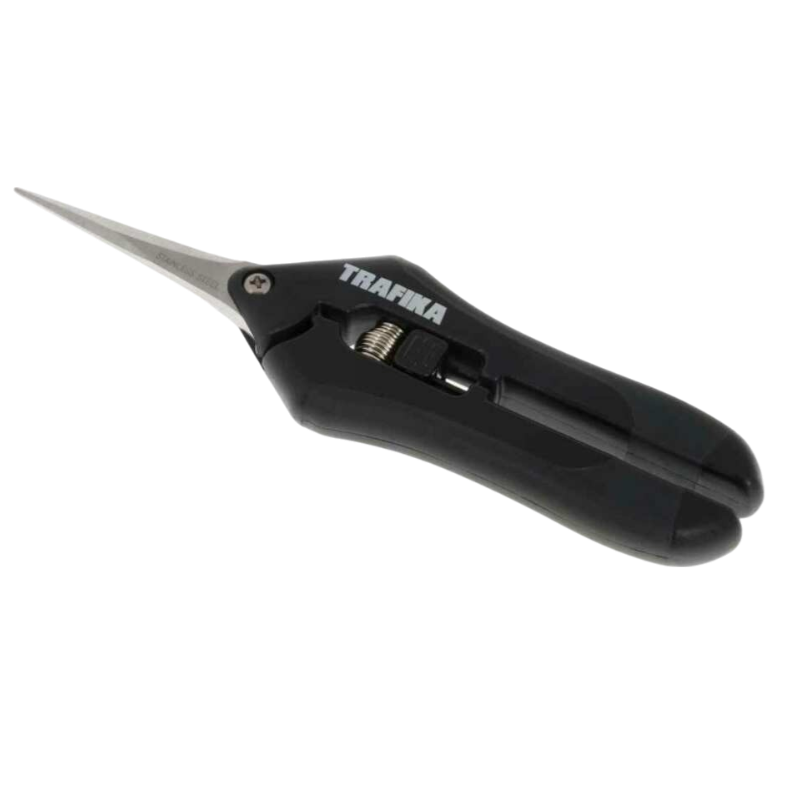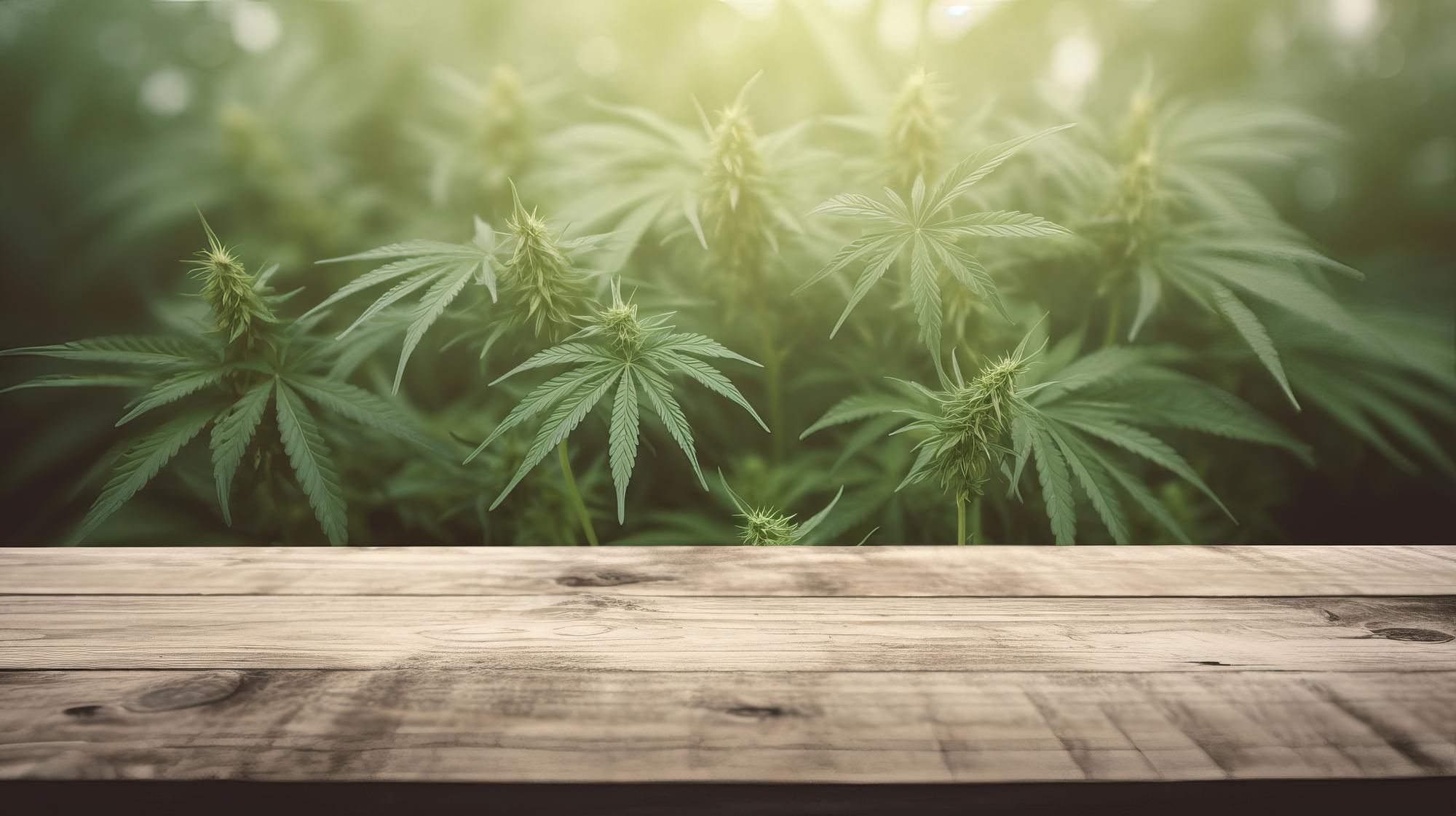1. Recognize alarm signals: How to notice that your plants are overheating
As a cannabis grower, it is crucial to recognize the first signs of heat stress in your plants early on. This is the only way you can intervene in time and save your precious harvest. Let's take a closer look at the most important warning signs that tell you that your green plants are suffering from the heat.
Visual signs of heat stress
The first alarm bells should ring if you notice the following changes in your cannabis plants:
- Upward curved leaf edges, often referred to as "tacoing"
- Discoloration of the leaves, especially yellowing or brown spots
- Wilted or limp leaves that do not become plump again even after watering
- Burnt leaf tips that appear brown and crispy
These symptoms often appear first on the upper leaves because they are closest to the light source and are therefore most affected by the heat.
Growth changes and other indicators
In addition to the visible signs on the leaves, there are other signs that may indicate heat stress:
- Slowed growth or complete cessation of growth
- Unusually high water demand
- Low humidity in the grow box
- Temperatures above 28°C for longer periods
Watch your plants carefully and take regular temperature and humidity measurements. A monitoring chart can help you identify trends:
| Measurement time | Temperature (°C) | Humidity (%) | Observations |
|---|---|---|---|
| Morning | 24 | 60 | Plants look healthy |
| Lunch | 29 | 45 | Slight upward curving of the leaves |
| At evening | 26 | 55 | Leaves are slowly recovering |
The sooner you recognize heat stress, the better you can react and minimize damage. Always keep a watchful eye on your cannabis plants and learn to interpret their subtle signals. Over time, you will develop a sense of when your plants need help and can thus create optimal conditions for healthy growth and a bountiful harvest.
2. Cooling techniques for professionals: effective ventilation systems and air conditioning
To effectively combat heat stress in your cannabis grow box, professional cooling techniques are essential. Optimal temperature control is the key to healthy plants and a productive harvest. Let's take a closer look at the most important methods and devices that can help you create a perfect climate in your grow box.
Ventilation systems: The basis of temperature control
A well-designed ventilation system is the key to a cool grow box. It not only provides fresh air, but also transports excess heat away. Here are the most important components:
- Exhaust fan: Removes warm air from the box
- Air inlets: Allow cooler fresh air to flow in
- Activated carbon filter: Cleans the exhaust air and reduces odors
- Air hoses: Direct the air through the box
When choosing your ventilation system, make sure it has sufficient power. As a rule of thumb, the fan should be able to completely replace the air volume in your grow box at least once per minute.
Air conditioning systems: The premier class of cooling
For larger setups or in particularly warm regions, an air conditioner may be the best solution. It offers precise temperature control and can regulate humidity at the same time. Consider the following points when choosing an air conditioner:
| aspect | Recommendation |
|---|---|
| Performance | At least 2000 BTU per m² of grow area |
| Energy efficiency | Look for a high EER number |
| Noise level | As quiet as possible for discreet operation |
| steering | Digital control for precise settings |
Innovative cooling methods for advanced users
In addition to classic ventilation and air conditioning systems, there are some advanced technologies you can consider:
- Water cooling: Cools the air through evaporation, ideal for dry climates
- LED lighting: Generates less heat than conventional grow lamps
- Thermal insulation: Special insulating materials on the walls of the grow box
- Smart home integration: Automated climate control for optimal conditions around the clock
Remember that the most effective cooling method is often a combination of different techniques. Experiment carefully and see how your plants respond to the changes. With the right equipment and a little fine-tuning, you will soon create the perfect climate for your cannabis plants and effectively prevent heat stress.
3. Natural heat protection hacks: From reflective materials to the right choice of pot
You don't always have to resort to expensive technical solutions to protect your cannabis plants from heat stress. There are a variety of natural and inexpensive methods that can help you optimize the climate in your grow box. Let's explore some clever hacks that will keep your plants cool even on hot days.
Reflective materials: The parasol for your plants
One of the most effective ways to lower the temperature in your grow tent is to use reflective materials. These deflect excess light and heat, creating a more comfortable microclimate for your plants.
- Mylar film: Excellent reflective properties, easy to apply
- White color: Cost-effective alternative, reflects up to 85% of light
- Aluminium foil: Cheap, but less effective and durable than specialised materials
Attach these materials to the walls and ceiling of your grow box. Make sure that there are no direct thermal bridges to the plants.
Choosing the right pot: size and material make the difference
Choosing the right pot can have a surprisingly big impact on your plants’ temperature regulation:
| Pot material | Advantages | Disadvantages |
|---|---|---|
| Fabric (Smart Pots) | Good ventilation of the roots, cools through evaporation | Faster drying of the substrate |
| clay | Natural cooling through evaporation | Heavy, fragile |
| plastic | Light, affordable | Poorer ventilation of the roots |
Also choose an appropriate pot size. Larger pots provide more substrate, which acts as a heat buffer, while pots that are too small can quickly overheat.
Natural shading and air circulation
Inspired by nature, you can use other methods to protect your plants from overheating:
- Companion Planting: Plants such as basil or clover between the cannabis plants provide natural shade and improved air circulation
- Vertical gardens: Use the height of your grow box to promote natural air circulation
- Water containers: Place open water containers in the box to increase humidity and cool through evaporation
Another tip is to use light-colored, breathable covering materials for your substrate. These reflect additional light and reduce evaporation from the soil, keeping the root zone cooler.
Timing is everything: adjusting the light cycle
An often overlooked aspect is the timing of your grow lights. By shifting the light period to the cooler hours of the night, you can significantly reduce heat stress during the day. This is especially effective if you live in a region with hot days and cooler nights.
With these natural heat protection hacks, you can optimize the climate in your grow tent without breaking your budget. Experiment with different combinations of these methods and see how your cannabis plants respond. With a little creativity and patience, you will soon find the perfect balance for healthy, stress-free plants.
4. Irrigation as a lifesaver: optimal strategies against dehydration
A well-thought-out watering strategy is crucial to protecting cannabis plants from heat stress. Water not only plays a central role in nutrient uptake, but also in the plant's temperature regulation. Let's delve deeper into the art of optimal watering and find out how to protect your green charges from drying out.
Timing is everything: when to water?
Timing your watering correctly can make a big difference. Here are some guidelines:
- Early morning: Ideal as the plants can absorb the water before the midday heat
- Late evening: Good for relaxing after a hot day, but beware of mold growth
- Avoid midday: direct watering in the blazing sun can cause burns
Watch your plants closely and learn to recognize their needs. A slight wilting of the leaves in the late afternoon is normal and nothing to worry about as long as the plant recovers overnight.
Quantity and frequency: finding the right balance
The optimal amount and frequency of water depends on several factors:
| factor | Impact on irrigation |
|---|---|
| Growth phase | Young plants require more frequent but smaller amounts of water |
| Pot size | Larger pots store more water and require less frequent watering |
| Substrat | Light substrates dry out faster than heavy ones |
| humidity | When humidity is low, more frequent watering is necessary |
As a rule of thumb, water thoroughly, but only when the top layer of the substrate is dry. Stick your finger about 2-3 cm deep into the soil - if it feels dry, it's time to water.
Innovative irrigation techniques
To optimize your irrigation, you can consider advanced methods:
- Drip irrigation: Delivers constant small amounts of water directly to the roots
- Self-watering pots: Store water in a reservoir and release it as needed
- Hydroponic systems: Allow precise control over water and nutrient supply
- Smart irrigation systems: Automate the process based on soil moisture and temperature
Water quality and temperature
The quality and temperature of the water should not be neglected:
- Use filtered or stale water if possible to reduce chlorine and other contaminants
- The water temperature should be close to room temperature to avoid temperature shock
- In extreme heat situations, slightly cooler water (not ice cold!) can help regulate temperature
Also remember to occasionally mist the leaves with a fine mist of water. This will increase the humidity around the plant and can provide additional cooling in extreme heat. However, be careful not to do this in direct sunlight to avoid burns.
With these strategies for optimal watering, you are well equipped to protect your cannabis plants from dehydration and heat stress. Watch your plants carefully, adjust your methods if necessary, and enjoy the sight of healthy, vital cannabis plants in your grow box.
5. Cannabis genetics: heat stress resistant strains for your grow box
Choosing the right cannabis genetics can make a huge difference when it comes to managing heat stress in your grow tent. Some strains are naturally better adapted to warm climates and can withstand higher temperatures. Let's take a closer look at heat stress resistant cannabis strains and how you can use them in your setup.
Why genetics is important
Cannabis plants have adapted to different climates over the course of evolution. Strains originally from warmer regions have often developed natural mechanisms to deal with heat:
- More efficient water use
- More robust cell structures
- Higher tolerance to UV radiation
- Adapted blade shapes for better heat dissipation
Top 5 heat stress resistant cannabis strains
Here are some varieties that are particularly well suited to warm growing conditions:
| Variety | type | Special features |
|---|---|---|
| Durban Poison | Cannabis | Originally from South Africa, very heat tolerant |
| Afghan Kush | Indica | Robust, resistant to temperature extremes |
| Hawaiian Snow | Sativa-dominant | Adapted to tropical climate, high humidity |
| Northern Lights | Indica-dominant | Compact, ideal for confined spaces with higher temperatures |
| Blue Dream | Hybrid | Balanced genetics, good all-round performance |
Adapting your cultivation technique to heat stress-resistant varieties
If you have chosen a heat-tolerant variety, you should adapt your cultivation technique accordingly:
- Reduce the nutrient concentration slightly, as these varieties often use nutrients more efficiently
- Watch for signs of overwatering or underwatering, as water needs may vary
- Experiment carefully with higher temperatures, but don’t overdo it
- Observe the stretching behavior, as some heat-tolerant varieties can grow faster
Breeding and crossing for improved heat tolerance
For advanced growers, targeted breeding offers an opportunity to further improve heat tolerance:
- Cross heat-tolerant varieties to increase resistance
- Select plants that performed best under heat stress for further breeding
- Document your results carefully to ensure long-term progress
Remember that breeding is a long process that requires patience and precision. It may take several generations to see significant improvements.
Final Thoughts on Cannabis Genetics
Choosing the right genetics is a powerful tool in combating heat stress in your grow tent. Combined with the cooling and watering techniques discussed previously, it can make the difference between a struggling crop and a thriving one.
Remember: Even the most robust genetics are no substitute for good growing practices. Continuous monitoring, maintenance and adjustment of your methods are the key to success. With the right strain and the right approach, you will be able to reap a healthy, productive cannabis harvest even on hot days.

















